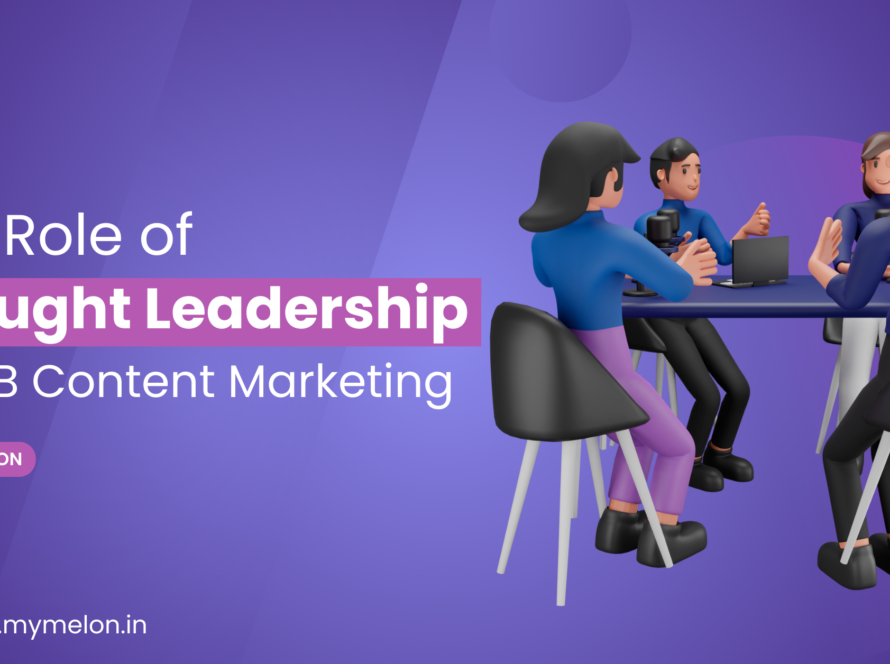Welcome to the second lesson of our “Thought Leadership” series. In part one… we delved into the foundational aspects of becoming a thought leader in your industry, emphasizing credibility and trust-building. In this part, we will explore a pivotal facet of thought leadership: the mastery of storytelling. Just as thought leadership positions you as an industry authority, storytelling elevates your impact by forging emotional bonds…
Let’s explore the profound psychology behind storytelling, dissect the essential elements of a compelling narrative, unveil strategies for integrating storytelling into your thought leadership, measure storytelling success, and see the hurdles that come with it.
The Psychology of Storytelling
As a thought leader, your expertise lays the foundation for impactful storytelling. Harnessing the psychology of storytelling enables you to connect on a personal level with your audience. Research shows that narratives trigger emotional responses in the brain, leading to enhanced memorability & relatability. By weaving your insights into stories, you engage your audience’s emotions making your messages more resonant & enduring.
Consider the thought leadership journey of Elon Musk. Beyond his innovations at Tesla and SpaceX, Musk’s ability to craft compelling narratives around the future of transportation and space exploration has captured the imaginations of millions. His stories of pushing boundaries and envisioning a better world resonate deeply, turning him into a thought leader with a profound impact on industries & society.
Storytelling for Brand Identity
Imagine a brand as a living entity with its own personality, values & beliefs. A consistent brand narrative serves as the thread that weaves together the various facets of this entity, forming a cohesive and memorable story that customers, clients & stakeholders can connect with.
Defining Brand Values & Mission…
The outdoor clothing company, Patagonia, doesn’t just sell outdoor gear; they champion environmental conservation. Their stories of activism and sustainable practices reinforce their brand identity.
Consistency…McDonald’s uses storytelling to maintain a consistent brand image across cultures. Their “I’m Lovin’ It” campaign weaves narratives of joy, sharing & simplicity across the globe.
Humanizing the Brand… Brands like Wendy’s have mastered the art of humanizing through witty and engaging social media interactions, creating a relatable and friendly brand persona.
Elements of a Captivating Brand Story
A compelling brand story consists of mainly three key elements.
Setting the Stage… Just as a good novel begins with setting the scene, a brand story must establish its universe. Apple, renowned for its innovative approach and compelling brand narrative, masterfully sets the stage for its story by challenging the conventional and inspiring a sense of individual empowerment.
Apple’s advertisements, for instance, often defy industry norms by focusing on emotions, experiences & human connections rather than just product features. Their “Shot on iPhone“ campaign, which showcases stunning user-generated photography and videos demonstrates the brand’s commitment to empowering individuals to capture and share their unique perspectives.
The Protagonist… Every brand needs a protagonist – someone or something to root for. Nike’s brand story is a symphony of determination & resilience, with the athlete as its central protagonist. This narrative echoes in their iconic ““Just Do It“ slogan and resounds through their advertising campaigns. By casting the athlete as the focal point, Nike crafts a resonant and inspiring story that motivates individuals to embark on their own journeys of self-discovery and achievement.
The Resolution…A brand story must align with customer values and aspirations. TOMS, known for its “One for One“ giving model, seamlessly weaves a narrative of compassion and positive change into its brand identity. This resolution not only resonates with consumers but also creates a sense of purpose in their purchase decisions.
Leveraging Storytelling in Thought Leadership
Video Thought Leadership…Video serves as a dynamic medium for conveying thought leadership narratives. Craft video content to reach a wider audience and impart your insights.

See how Brené Brown uses Ted Talks to amplify her thought leadership.
Podcast Thought Leadership… Hosting a thought leadership podcast enables you to narrate industry trends, share insights & engage in interviews with fellow experts. This format extends the reach of your thought leadership to an auditory audience.

Jay Baer’s ‘Social Pros’ podcast explores social media strategies in an easy-to-understand way.
Visual Storytelling… Elevating the impact of thought leadership narratives through visual elements. The combination of visuals & words not only educates but also inspires a global audience, making complex concepts accessible and fostering a sense of community among aspiring marketers.

Gary Vaynerchuk’s Instagram feed serves as a prime showcase, where content with concise yet impactful captions, delivers profound insights into technologies & modern marketing strategies.
Measuring Storytelling Success
Measuring the effectiveness of storytelling, even though it might seem a bit mysterious, can actually be broken down into specific indicators that give us clues about how well our stories are working. Here’s how we can measure it:
Engagement Metrics… Similar to how you’d observe smiles and nods from an audience while telling a story in person, online engagement serves as our indicator of how deeply people are engaging with our narratives. For example, Coca-Cola’s Share a Coke campaign saw a whopping 2,400% surge in people interacting on Facebook. By keeping an eye on things like how many likes, shares & comments your stories get, you can tell if your audience is really getting into what you’re sharing.
Conversion Rates… Here’s where things get exciting. Just like a good story can make people take action, storytelling in marketing can boost sales. Take Mailchimp’s “Did You Mean Mailchimp?“ campaign – it led to a cool 4.4% increase in their revenue. When people not only listen but also decide to act, like making a purchase or signing up, that’s a sign your stories are having a real impact.
Customer Feedback & Sentiment Analysis… Imagine if you could hear the audience’s thoughts as you tell a story. Well, with the help of social listening tools, you can kind of do that online. These tools let you know how people feel about your stories – are they excited, happy, or confused? It’s like a digital thumbs-up or thumbs-down. By tuning in to these sentiments, you can see how well your stories are resonating with your audience.
Just like in a good story, the more engaged and connected the audience is, the more successful the storytelling becomes.
Challenges in Thought Leadership Storytelling
Embarking on the path of thought leadership is both fulfilling and impactful, allowing individuals to inspire and influence through engaging stories. However, this journey isn’t without its obstacles. Let’s delve into some of the main challenges in thought leadership storytelling…
- Authenticity Amidst Noise… In a digital age flooded with content, standing out requires authenticity. Thought leaders often face the challenge of remaining true to their voice and values while adapting to trends.
- Striking a Balance… Navigating the fine line between self-promotion and delivering value is a challenge. While showcasing expertise is crucial, overemphasizing oneself can distance audiences.
- Adapting to Diverse Audiences… Thought leaders often address a wide range of audience demographics, each with distinct needs and preferences. Tailoring narratives to resonate with these diverse groups can be a daunting task sometimes.
- Evolving Relevance… Staying relevant as industries and trends evolve is a persistent challenge. Thought leaders must continuously update their narratives to remain in tune with changing times.
- Simplifying Complexity… Conveying concepts in a simplified manner without losing essence is an art. Thought leaders often need to make intricate subjects accessible to a broad audience.
The journey requires a willingness to learn, evolve & connect authentically with audiences. By embracing these challenges head-on, thought leaders can navigate the ever-changing terrain of storytelling, leaving a lasting impact and shaping industries and minds along the way.
To end up…
In part two of our “Thought Leadership” series, we’ve explored the transformative power of storytelling in amplifying your industry influence. By understanding the psychology of narratives, mastering key storytelling elements & embracing diverse formats, you can weave your industry insights into captivating stories that resonate and leave an indelible mark on your audience & your industry…





